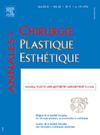Trans-flap nasal airway preservation in-house device
IF 0.5
4区 医学
Q4 SURGERY
引用次数: 0
Abstract
Reconstruction of the nasal pyramid following oncologic ablative surgery presents a unique set of challenges due to the region's intricate anatomy and dual functional and aesthetic significance. In cases where immediate nasal reconstruction is not feasible, maintaining nasal airway patency becomes critical for patient safety and postoperative outcomes. This technical note introduces a practical method for modifying and utilizing Naso-Flo® nasal intubation tubes as a nasal airway preservation device in reconstructive surgeries involving microvascular flaps. The technique ensures the preservation of nasal airflow through both nasal cavities by channeling two nasal tubes through the flap during reconstruction. The procedure begins with preoperative planning to measure the nasal cavities and design the flap while identifying safe zones for tube placement, avoiding vascular perforators. During flap inset, pathways are created through the flap's thickness to accommodate the nasal tubes, which are securely positioned and sutured externally. This device provides an alternative airway until secondary reconstructive surgeries are performed, with adjustable trimming during follow-up. This in-house modification demonstrates an efficient, cost-effective solution to preserve nasal airway patency, offering functional and safety benefits in complex nasal reconstructions where staged procedures are required.
Reconstruction de la pyramide nasale après une chirurgie ablative oncologique présente un ensemble unique de défis en raison de l’anatomie complexe de la région et de sa double importance fonctionnelle et esthétique. Dans les cas où une reconstruction nasale immédiate n’est pas réalisable, le maintien de la perméabilité des voies respiratoires nasales devient essentiel pour la sécurité du patient et les résultats postopératoires. Cette note technique propose une méthode pratique pour modifier et utiliser les tubes d’intubation nasale Naso-Flo® comme dispositif de préservation des voies respiratoires nasales lors des chirurgies reconstructives impliquant des lambeaux microvasculaires. La technique permet de préserver le flux d’air nasal à travers les deux cavités nasales en insérant deux tubes nasaux dans le lambeau pendant la reconstruction. La procédure débute par une planification préopératoire pour mesurer les cavités nasales et concevoir le lambeau tout en identifiant les zones sûres pour la mise en place des tubes, en évitant les perforateurs vasculaires. Lors de la mise en place du lambeau, des passages sont créés à travers l’épaisseur du lambeau pour accueillir les tubes nasaux, qui sont positionnés de manière sécurisée et suturés à l’extérieur. Ce dispositif offre une alternative respiratoire jusqu’à ce que des chirurgies reconstructives secondaires soient effectuées, avec des ajustements possibles lors des suivis. Cette modification réalisée en interne représente une solution efficace et économique pour préserver la perméabilité des voies respiratoires nasales, apportant des avantages fonctionnels et de sécurité dans les reconstructions nasales complexes nécessitant des procédures en plusieurs étapes.
经瓣鼻气道内部保存装置。
由于该区域复杂的解剖结构和双重功能和美学意义,肿瘤消融手术后鼻金字塔的重建提出了一套独特的挑战。在不能立即进行鼻腔重建的情况下,维持鼻气道通畅对患者安全和术后结果至关重要。本技术说明介绍了一种在微血管瓣重建手术中修改和使用Naso-Flo®鼻插管管作为鼻气道保护装置的实用方法。该技术在重建过程中通过皮瓣引导两根鼻管,确保鼻腔气流通过两个鼻腔的保存。手术开始于术前计划,测量鼻腔,设计皮瓣,同时确定放置导管的安全区域,避免血管穿孔。在皮瓣插入期间,通过皮瓣的厚度创建通道以容纳鼻管,鼻管被安全地定位并缝合在外部。该装置在进行二次重建手术前提供替代气道,在随访期间可调节修剪。这种内部改造证明了一种有效、经济的解决方案,可以保持鼻气道通畅,在需要分阶段进行的复杂鼻腔重建中提供功能和安全性方面的好处。
本文章由计算机程序翻译,如有差异,请以英文原文为准。
求助全文
约1分钟内获得全文
求助全文
来源期刊
CiteScore
1.00
自引率
0.00%
发文量
86
审稿时长
44 days
期刊介绍:
Qu''elle soit réparatrice après un traumatisme, pratiquée à la suite d''une malformation ou motivée par la gêne psychologique dans la vie du patient, la chirurgie plastique et esthétique touche toutes les parties du corps humain et concerne une large communauté de chirurgiens spécialisés.
Organe de la Société française de chirurgie plastique reconstructrice et esthétique, la revue publie 6 fois par an des éditoriaux, des mémoires originaux, des notes techniques, des faits cliniques, des actualités chirurgicales, des revues générales, des notes brèves, des lettres à la rédaction.
Sont également présentés des analyses d''articles et d''ouvrages, des comptes rendus de colloques, des informations professionnelles et un agenda des manifestations de la spécialité.

 求助内容:
求助内容: 应助结果提醒方式:
应助结果提醒方式:


